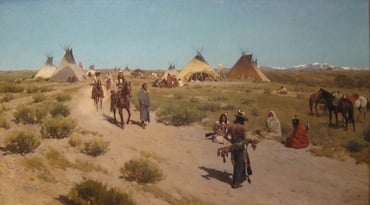Apocalypse Revealed#404
404. And a third of the sea became blood. This symbolically means that general truths had all been falsified in them.
A third means, symbolically, all (no. 400). Blood symbolizes the falsification of the Word's truth (no. 379). The sea symbolizes the church in people concerned with its external elements and caught up in faith alone (nos. 398, 402). General truths are falsified among such people because they are concerned with those truths alone, as they do not know the particulars of that faith, as the clergy do. It is because of those general truths in them that they appear in the spiritual world to be at sea. That is because waters symbolize truths (no. 50), and the sea is the general receptacle of them (no. 238).
Dwell

To “dwell” somewhere, then, is significant – it’s much more than just visiting – but is less permanent than living there. And indeed, to dwell somewhere in the Bible represents entering that spiritual state and engaging it, but not necessary permanently. A “dwelling,” meanwhile, represents the various loves that inspire the person who inhabits it, from the most evil – “those dwelling in the shadow of death” in Isaiah 9, for example – to the exalted state of the tabernacle itself, which was built as a dwelling-place for the Lord and represents heaven in all its details. Many people were nomadic in Biblical times, especially the times of the Old Testament, and lived in tents that could be struck, moved and raised quickly. Others, of course, lived in houses, generally made of stone and wood and quite permanent. In between the two were larger, more elaborate tent-style structures called tabernacles or dwellings; the tabernacle Moses built for the Ark of the Covenant is on this model.






